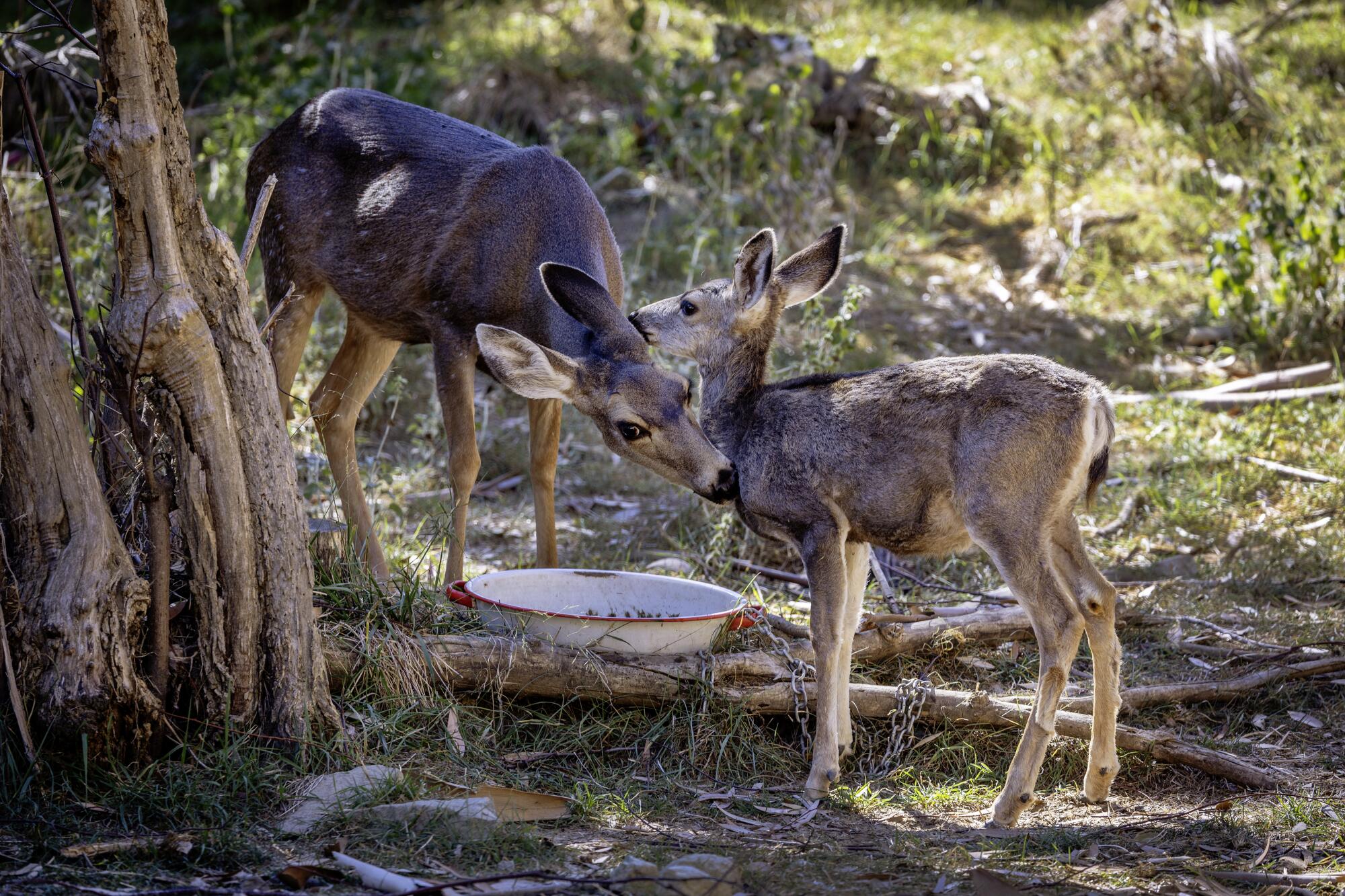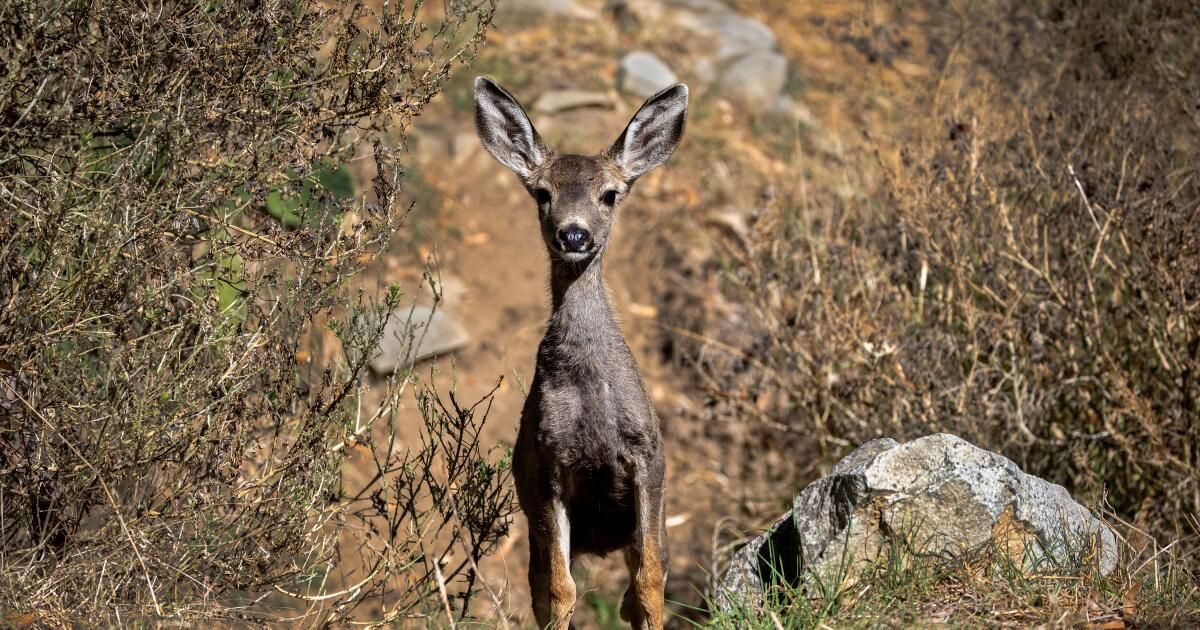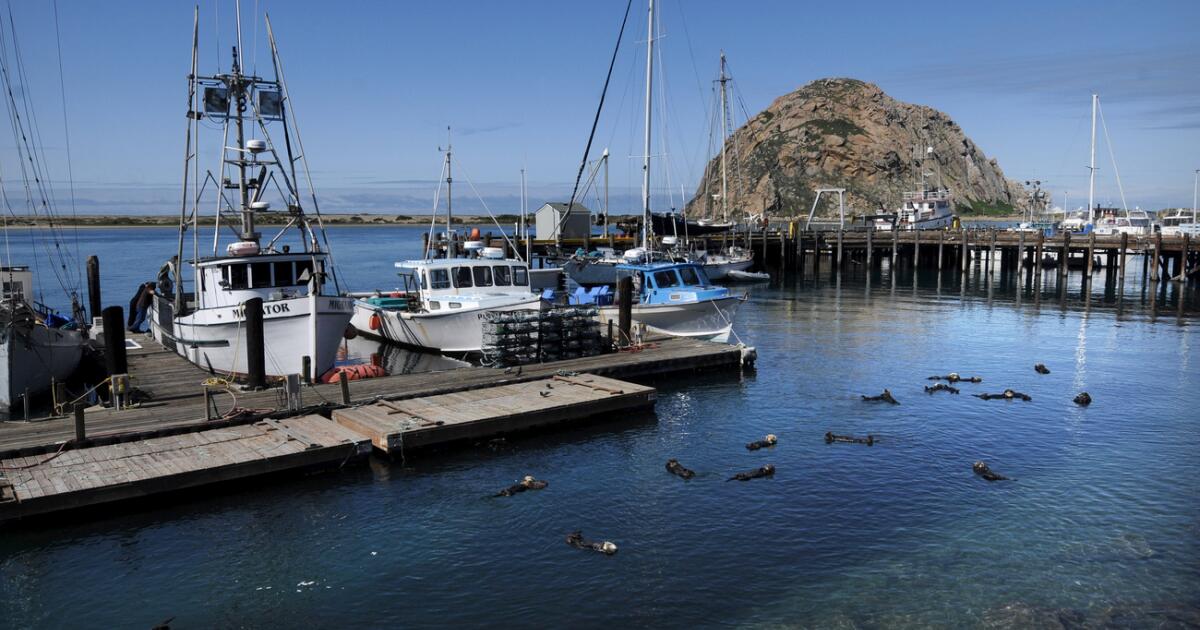Santa Catalina Island's elusive mule deer dodged a bullet, or several, Wednesday.
At a special meeting of the Los Angeles County Fish and Wildlife Commission, the Catalina Island Conservancy, which controls 88% of the island, announced it was scrapping plans to eradicate non-native species by shooting them from helicopters with high-powered rifles. .
Los Angeles County Supervisor Janice Hahn, whose district includes the island, confirmed in a statement that the conservation entity has “taken the aerial shooting proposal off the table.”
“I thank the Conservancy for listening to the serious concerns people had about this plan, especially people who live on the island,” Hahn said in a statement. “I heard from residents who were terrified at the thought of bullets raining down from helicopters on their beloved island and others who couldn't bear the thought of the deer carcasses that would be left in their wake.”
Lauren Dennhardt, the entity's senior conservation director, did not respond to a request for comment. The group previously indicated it would be open to considering other options on how best to rid the island of non-native deer.
In his statement, Hahn said Dennhardt told the meeting that the organization was reviewing its plan “to prioritize other methodologies” in light of concerns raised by Hahn and island residents.
Mule deer were introduced to the island in the 1930s as a game species, according to the conservation organization.
Protesters from the Catalina Anti-Slaughter Deer Coalition hold signs as visitors to the island arrive on the Catalina Express boat on October 30, 2023.
(Allen J. Schaben/Los Angeles Times)
Its population can range between 500 and 1,800 inhabitants, according to the conservation organization. The group claims invasive deer have destroyed natural habitat, including vegetation only found on the island, and exacerbated the risk of soil erosion in overgrazed areas.
As the conservation organization continues to plot how to hasten their demise, the deer are dying of hunger and thirst.
Photos presented at Wednesday's meeting included a dead young deer lying on a paved walkway. Another showed a male deer rummaging through an Avalon resident's trash can.
“Both the island and the deer are fighting to survive, and neither is winning,” Whitney Latorre, the organization's executive director, said in an interview in the fall. “Unless we address the deer problem, the island will become increasingly vulnerable to the devastating consequences caused by rising temperatures and drought.”
Hahn drafted a letter that supervisors unanimously approved April 23 opposing the proposal to hunt deer from helicopters, calling it “inhumane and drastic.”
He said his letter was prompted by “an intense public outcry” that arose after the aerial shooting proposal became public last year.
The conservancy's original plan was to hire snipers from the Connecticut-based nonprofit White Buffalo Inc. The group would use AR-15 style rifles with lead-free bullets, to avoid poisoning natural scavengers.
Some bodies would remain where they fell, and those closest to Avalon and the roadsides would be removed.
Ultimately, the California Department of Fish and Wildlife will decide whether to allow any plans the conservation puts forward to remove the deer. The agency had not commented on the helicopter proposal because it had been waiting for additional documentation from the conservation entity, a Fish and Wildlife spokesperson said.

A mule doe licks her fawn on Catalina Island in 2023.
(Allen J. Schaben/Los Angeles Times)
It is unclear what will happen next.
Hahn is asking the conservancy to reconsider previously discarded alternative proposals, although he did not endorse any specific course of action, a spokesperson said.
The organization had considered fencing, recreational hunting, the introduction of natural predators, relocation, sterilization and chemical contraceptives before settling on aerial hunting, which it said was an efficient way to quickly remove large numbers of animals.
The main drawbacks included the loud sounds of gunshots, which could distress wildlife and residents.
By comparison, fencing was described as expensive and challenging, given the island's topography, while recreational hunting was generally ineffective, the organization said. According to the organization, between 200 and 300 hunters visit the island annually.
In total, there are about 4,200 residents and 1 million visitors in Catalina, which spans about 48,000 acres.
Opposition to aerial hunting has been intense. The advocacy group Coalition to Save Catalina Island Deer has collected more than 18,000 signatures since Sept. 23 on a petition opposing the concept.
Bernd Blossey, a professor of natural resources and environment at Cornell University, said in an interview in April that aerial gunfire was a standard form of extermination.
Blossey, who chairs the university's deer management program, pointed to aerial shooting efforts used to eradicate feral goats in the Galapagos Islands and in New Zealand earlier this century.
Blossey also believes that calls to relocate animals, as some conservationists want, may do more harm than help.
“Capture is traumatic, transportation is traumatic, and the success rates of doing both are low,” he said. “Then they move them to areas they don't know and that's just not a good thing.”
The American Association. of Wildlife Veterinarians endorsed aerial shooting Wednesday via letter, while the American Bird Conservancy, the California Botanical Garden and several others supported permanent removal of the non-native deer.












